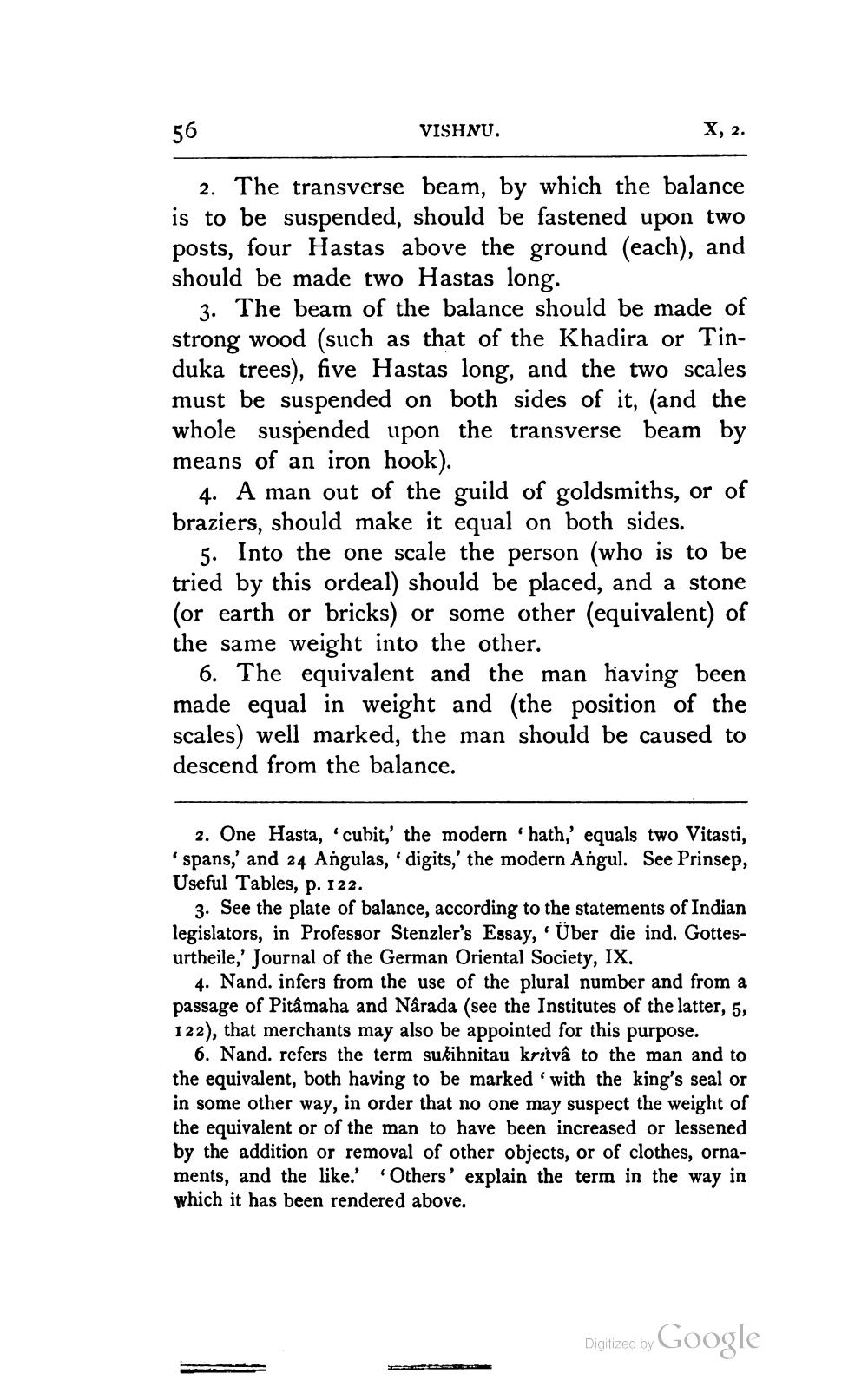________________
56
VISHNU.
X, 2.
2. The transverse beam, by which the balance is to be suspended, should be fastened upon two posts, four Hastas above the ground (each), and should be made two Hastas long.
3. The beam of the balance should be made of strong wood (such as that of the Khadira or Tinduka trees), five Hastas long, and the two scales must be suspended on both sides of it, (and the whole suspended upon the transverse beam by means of an iron hook).
4. A man out of the guild of goldsmiths, or of braziers, should make it equal on both sides.
5. Into the one scale the person (who is to be tried by this ordeal) should be placed, and a stone (or earth or bricks) or some other (equivalent) of the same weight into the other.
6. The equivalent and the man having been made equal in weight and (the position of the scales) well marked, the man should be caused to descend from the balance.
2. One Hasta, cubit,' the modern hath,' equals two Vitasti, 'spans,' and 24 Angulas, digits,' the modern Angul. See Prinsep, Useful Tables, p. 122.
3. See the plate of balance, according to the statements of Indian legislators, in Professor Stenzler's Essay, 'Über die ind. Gottesurtheile,' Journal of the German Oriental Society, IX.
4. Nand. infers from the use of the plural number and from a passage of Pitâmaha and Narada (see the Institutes of the latter, 5, 122), that merchants may also be appointed for this purpose.
6. Nand. refers the term sukihnitau kritvâ to the man and to the equivalent, both having to be marked with the king's seal or in some other way, in order that no one may suspect the weight of the equivalent or of the man to have been increased or lessened by the addition or removal of other objects, or of clothes, ornaments, and the like. Others' explain the term in the way in which it has been rendered above.
Digitized by Google




